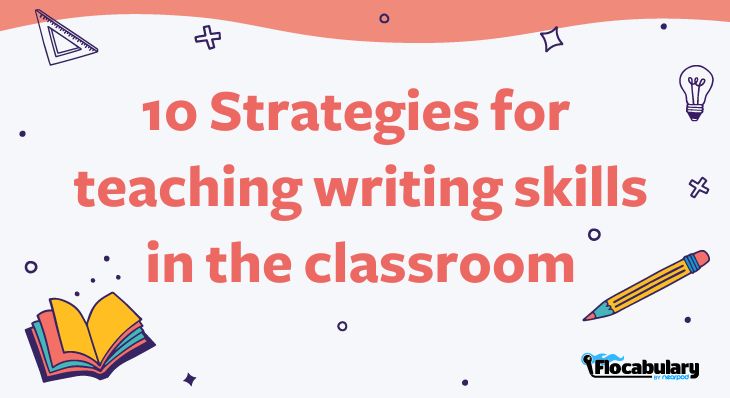
10 Strategies for teaching writing skills in the classroom
Often, teachers hesitate when it comes to teaching writing because they aren’t confident in their own writing skills. Although writing is a key pillar of literacy, the artistry involved and the vast styles and approaches can make it a tad daunting to teach. However, writing is not just an essential literacy skill that is foundational to personal and professional success—at its core, it is an amazing form of self-expression and creativity. As with most fundamental skills, it is vital to encourage students to write early and often. They should not let skills, or lack of them, thwart their attempts at storytelling and communication. As writers build their toolboxes of literary devices, they can begin to craft and hone their own style and voice.
What are the key components of effective writing instruction?
A scaffolded approach allows teachers to integrate foundational writing skills with insights from the Science of Reading. Instruction begins with writing mechanics and conventions, such as spelling, punctuation, capitalization, and sentence structure. As students develop their fine motor skills—like gripping a pencil—they engage in handwriting practice, which builds the physical ability to write.
Layer by layer, students can expand their focus to meaning, enhancing their vocabulary and experimenting with word choice. Research in the Science of Reading highlights that a robust vocabulary is not only critical for reading comprehension but also empowers students to express their ideas more vividly and accurately in writing. By learning how to add detail and organize their thoughts with clarity, students become more adept writers.
Flocabulary instructional writing examples
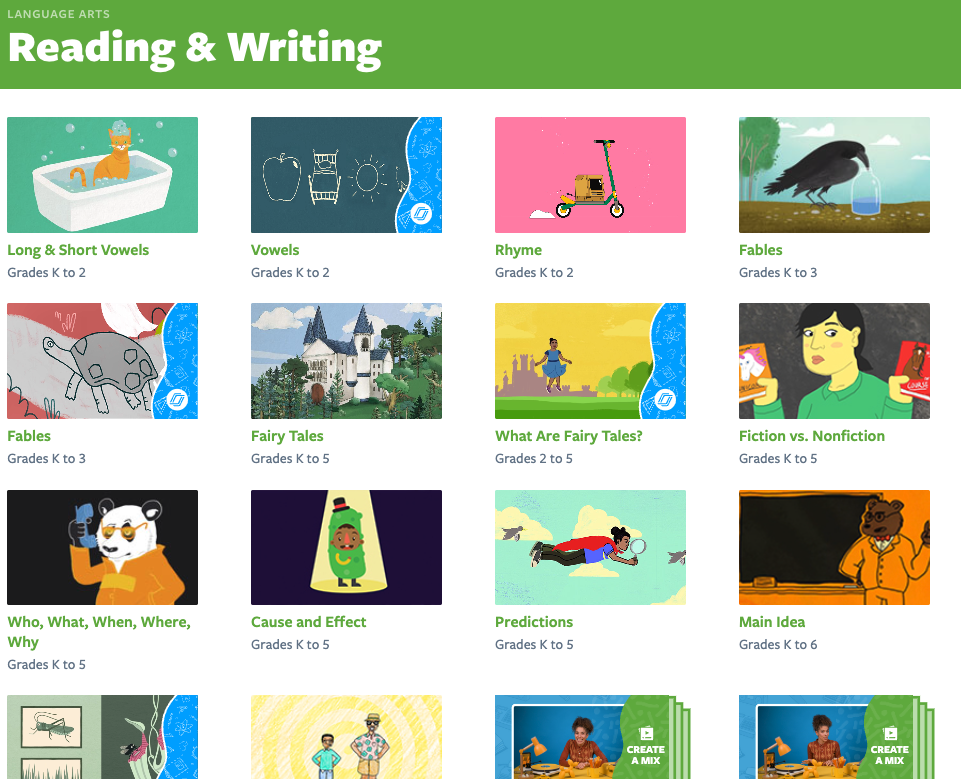
Flocabulary video lessons for Reading and Writing leverage hip-hop, engaging visuals, and compelling storytelling to enhance students’ writing skills and vocabulary acquisition, making the content area more relevant and memorable. Every video lesson is paired with various activities and assessments: Vocab Cards, Vocab Game, Break It Down*, Read & Respond, and Lyric Lab. Students can specifically practice their skills with Read & Respond passages, use the Quiz to check their understanding and create rhymes using Lyric Lab.
Additionally, Flocabulary offers a creative way to infuse the fundamentals of writing instruction into your lesson planning by creating Flocabulary Mix lessons*. First, select and preview a literacy skill from those listed by grade level. Then, select a video text. The skill video provides a spoken direct set of instructions that is paired with the hip-hop video text. Your students will view both, and afterward, they can dive deeper into the newly introduced vocabulary through assessments and analysis activities designed to help them develop and practice comprehension strategies.
Writing strategies for students: Flocabulary’s impact on literacy
For instance, Richmond Public Schools’ (RPS) implementation of Flocabulary significantly enhanced vocabulary comprehension, literacy skills, and writing strategies for students across all core subjects. Fourth-grade teachers at RPS reported a 75% total improvement in reading scores, including a 60% increase in growth and a 30% rise in proficiency. The use of Flocabulary not only made learning more enjoyable for students but also translated into substantial gains in their Standards of Learning (SOL) state test scores, proving that when students are motivated and excited about their education, their academic performance soars.
*Break It Down and Flocabulary Mix is only available to users with a Flocabulary Plus subscription.
New to Flocabulary? Teachers can sign up for a trial to access our lesson videos and assessment activities. Administrators can get in touch with us to learn more about unlocking the full power of Flocabulary through Flocabulary Plus.
10 Strategies for teaching writing skills in the classroom
1. Keep reading
Author Stephen King claims in his book On Writing: A Memoir of the Craft, “If you want to be a writer, you must do two things above all others: read a lot and write a lot. There’s no way around these two things that I’m aware of, no shortcut.” Expose students to all genres of literature, all types of authors, and instructional writing examples. As they begin to identify their favorites, pepper them with questions as to why. In English language arts classes, you can also challenge them to write in a style similar to a chosen author—imitation is the sincerest form of flattery (as they develop their own greatness, that is).
Find a plethora of K-12 video lessons in our Language Arts section, including stories, literature, and informational texts. These video lessons are perfect for covering classic stories to provide students extra context for their reading comprehension or to help them learn more reading strategies they can apply daily.
Explore these videos to support reading in your classroom:
- Reading & Writing: Lessons on genres, figurative language, story structures and elements, and more.
- Literature: Lessons and summaries of classical literature and Flocabulary stories for students.
- Informational Text: Lessons and adaptations of non-fiction stories and informational texts.
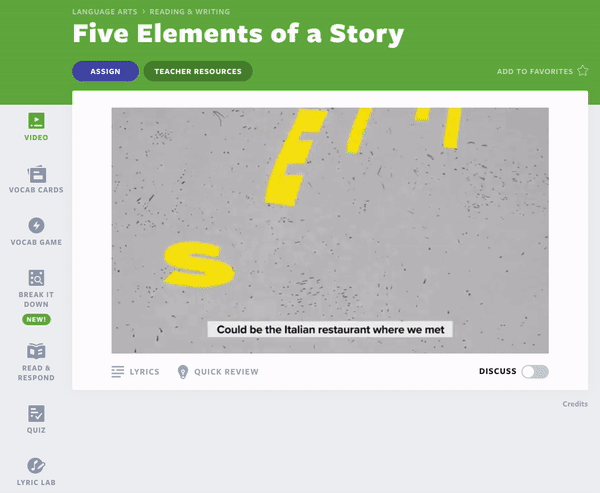
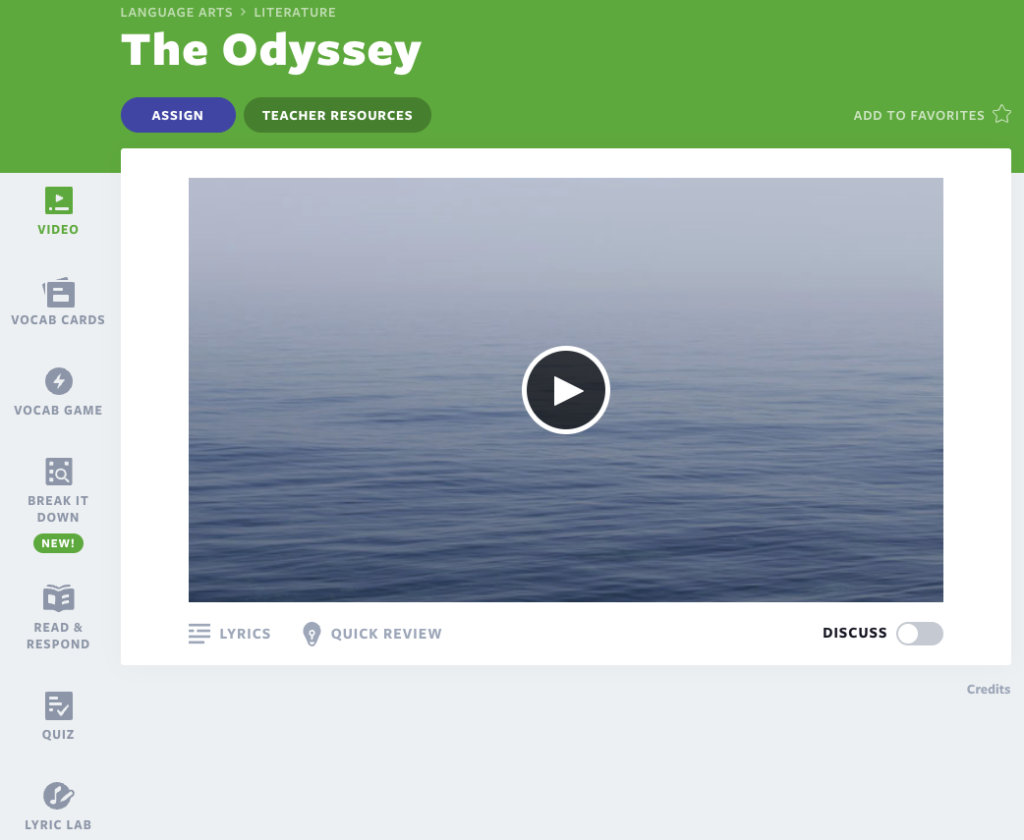
2. Practice storytelling
Almost all stories have a beginning, a middle, and an end. Students need to practice telling stories, whether in writing or verbally, to grasp the idea of sequencing events and the basics of story elements. Retelling stories provides explicit instruction for honing summarization skills (which is not an easy skill for any age!). For an added challenge, give students bookends to work within, such as a character or time limit—you can use social media posts as an example with Twitter/X’s 280-character limit, TikTok’s 90-second limit, or IG Story’s 60-second limit.
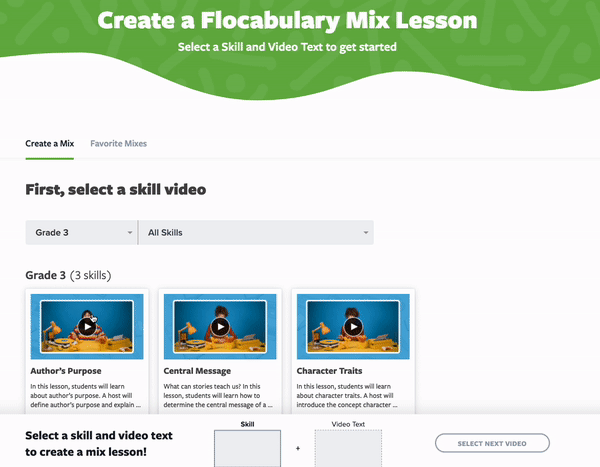
Underscore comprehension strategies using skill videos for Flocabulary Mixes. Here are some examples of lessons to use across grade levels:
- Retelling Stories (Grades K-1)
- Identifying the Main Topic (Grade 2)
- Author’s Purpose (Grade 3)
- Finding the Main Idea (Grades 3-5)
- Summarizing (Grades 4-8)
*Skill videos and Flocabulary Mix are only available to users with a Flocabulary Plus subscription.
3. Build vocabulary
It sounds simple enough, but help your students be aware of words to boost vocabulary acquisition. Highlight when others make a conscious word choice. Encourage them to play with words. As babies begin to acquire vocabulary, they build a lexicon for their primary language. This lexical development continues as learners build a sense of meanings and form and how to use words in relationship with one another. As a teacher, I encouraged my students to avoid bland “four-letter words” such as SAID or GOOD. You can encourage students to keep personal dictionaries, where they make note of new words or those that intrigue them. A thesaurus can be a budding writer’s best ally in written work!
Explore our essential strategies to teach vocabulary to understand the vital role of vocabulary acquisition as a valuable tool to enhance students’ language depth and writing abilities. Using strategies like multiple exposures and structured models such as the Frayer model, explore the importance of using and applying words creatively—a skill essential for effective writing.
4. Don’t forget the technical
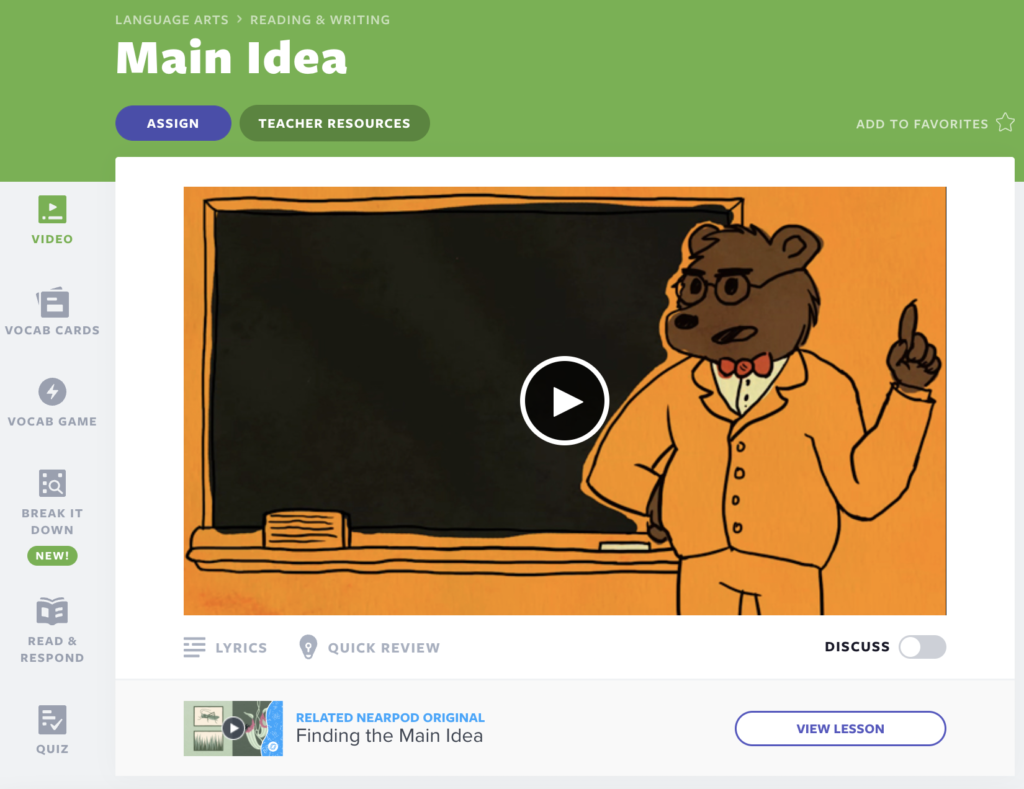
While creative writing can help capture the soul and talent of young authors, they also can begin to sharpen their technical writing skills for expository and persuasive writing. Students can learn effective writing strategies for informational pieces such as essays, newsworthy articles, op-eds, advertisements, debates, and research reports. Such writing strategies teach students that there are different types of writing for different purposes: descriptive, narrative, expository, and persuasive.
Here are some lessons and writing activities you can use for elementary, middle, and high school:
- Main Idea (Grades K-6)
- Paragraph Writing (Grades 2-5)
- Persuasive Language (Grades 3-8)
- The Writing Process (Grades 5-12)
- The Five Paragraph Essay (Grades 5-12)
5. Build up toolboxes
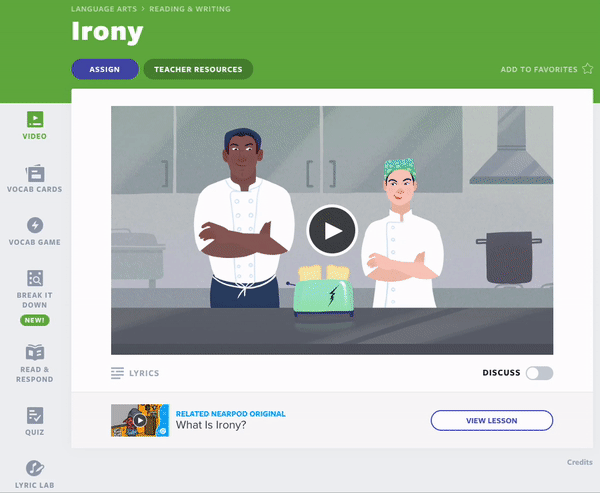
As students amass strategies and analyze best practices in writing, they can begin to develop their own writer’s toolbox. These toolboxes can catalog story elements such as plot, setting, characters, point of view, and conflict. Students can add definitions and examples of literary and poetic devices such as irony, alliteration, metaphors, hyperbole, and oxymoron … just to name a few. Such techniques will embolden them to use symbolism and figurative language to differentiate their prose and their writing from others. Students will delight in the sophistication they can bring to their writing by not only understanding but also employing such devices.
Showcase examples for their toolboxes by using these lessons:
- Topic Sentences (Grades 2-5)
- Conflict (Grades 5 to 8)
- Five Elements of a Story (Grades 3-12)
- Onomatopoeia (Grades 3-5)
- Similes & Metaphors (Grades 3-8)
- Irony (Grades 6-12)
6. Go around the writing cycle
Early in elementary school, many teachers introduce the concept of the writing cycle, which typically varies from five to seven stages. However, all versions of the writing cycle depict the idea that the step-by-step process of writing is continuous and that high-quality writing benefits from being revisited repeatedly. Pre-writing begins with seed ideas that take shape with graphic organizers or outlines. Students write multiple drafts, getting their ideas down on paper. Revising is when they continue to add or subtract pieces to refine their work. And then editing is when the more mechanical aspects of writing are revisited and polished by the author or peer reviewers. Often, the most challenging part of the writing cycle is knowing when you’re done and ready to share and celebrate via publication.
During the writing cycle, encourage students to go back and revise their writing for clarity—which often means revisiting grammar. Flocabulary has tons of video lessons on grammar, including the following:
- Commas (Grades 1-8)
- Nouns (Grades K-3)
- Run-On Sentences (Grades 4-6)
- Synonyms & Antonyms (Grades 2-8)
- Parts of Speech (Grades 2-8)
7. Differ your point of view
Help students realize that writing is quite personal and often is based on an author’s experiences and biases (recognized or not). Challenge them to not only identify the point of view but also try seeing the story from another person’s perspective. Jon Scieszka’s The True Story of the 3 Little Pigs is a wonderful way to illustrate this for young readers and writers. Similarly, Gregory Maguire has found success in novels—and on stage—with his unique perspectives in books such as Wicked.
Teach about point of view using the following video lessons:
- Point of View (Grades 3-12)
- Nearpod Original*: Point of View (Grades 3-5)
- Skill video*: Identifying Point of View (Grade 4)
- Skill video*: Differing Perspectives (Grade 7)
*Skill videos and Nearpod Originals are only available to users with a Flocabulary Plus subscription.
8. Play with word choice and structure
Playing with words comes down to personal word choice as well as word structure. Challenge your students to take a simple phrase such as “The sky is blue” and mold it into something more by toying with word selection and placement. Remind students to have fun with writing—sometimes, that may mean abandoning conventions such as spelling and punctuation in a first draft. Let them “word vomit” and then go back and revise the piece with conventions that make it more readable by others. Don’t let convention get in the way of creativity.
Here are some lessons you can use in your classroom to teach about word choice, structure, and figurative language:
- Word Choice (Grades 5-12)
- Text Structure (Grades 3-8)
- Skill video: Author’s Word Choice (Grades 6-8)
- Skill video: Analyzing Word Choice (Grades 9-12)
9. Invoke sensory details
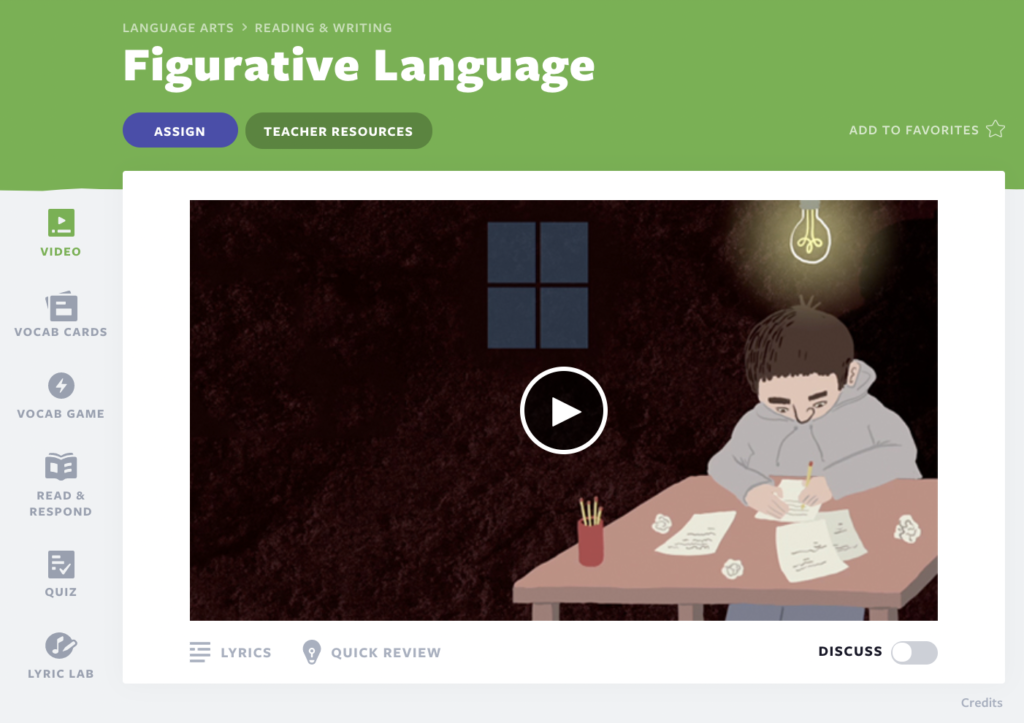
Many teachers encourage their students to “show, don’t tell” in their writing. Students can lean on their five senses—sight, sound, smell, taste, and touch—to bring their writing alive with sensory details. I often ask kids to use their “mind’s eye” to share details that would, in turn, awaken their reader’s mind’s eye. We know how important an active imagination is, and we should encourage kids to sharpen theirs and not dull it with age.
“Young human beings need exercises in imagination as they need exercise in all the basic skills of life, bodily and mental: for growth, for health, for competence, for joy,” author Ursula K. Le Guin wrote. “This need continues as long as the mind is alive.”
KQED
Encourage students of all ages to use descriptive and figurative language using these lessons:
- Using Descriptive Language (Grades 3-12)
- Figurative Language (Grades 5-12)
10. Lean into technology
There are so many dynamics to learning how to write, but technology can ease some of the common obstacles. If a child struggles with penmanship, keep working on those fine motor skills but give him a keyboard to learn how to type early. Don’t let a pencil grip get in the way of words and ideas flowing. Similarly, assistive and adaptive technologies can turn voice recording into text to encourage the art of storytelling. Aids like spelling and grammar checker software can provide tips and tricks that students can begin to internalize over time.
Use Flocabulary for writing instruction
If you grapple with how to teach writing skills, start by seeking out Flocab-based practices for writing instruction. Flocabulary has a clear scope and sequence by grade level to begin building foundational writing and research skills. Teaching writing can be a rewarding endeavor, as students will relish the agency and independence of finding their own voice and having a channel for true self-expression. With a focus on 21st-century learning skills, creativity, communication, critical thinking, and collaboration all come when students put pen to paper or fingers to a keyboard.
New to Flocabulary? Teachers can sign up for a trial to access our lesson videos and assessment activities. Administrators can get in touch with us to learn more about unlocking the full power of Flocabulary through Flocabulary Plus.
